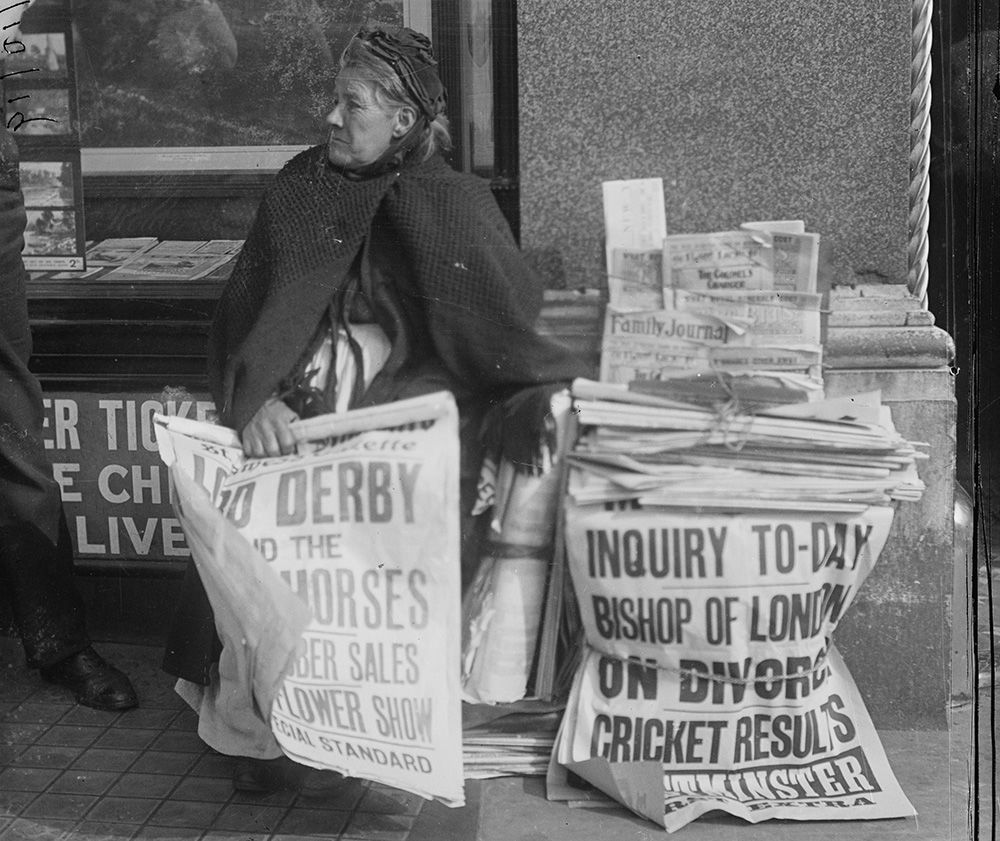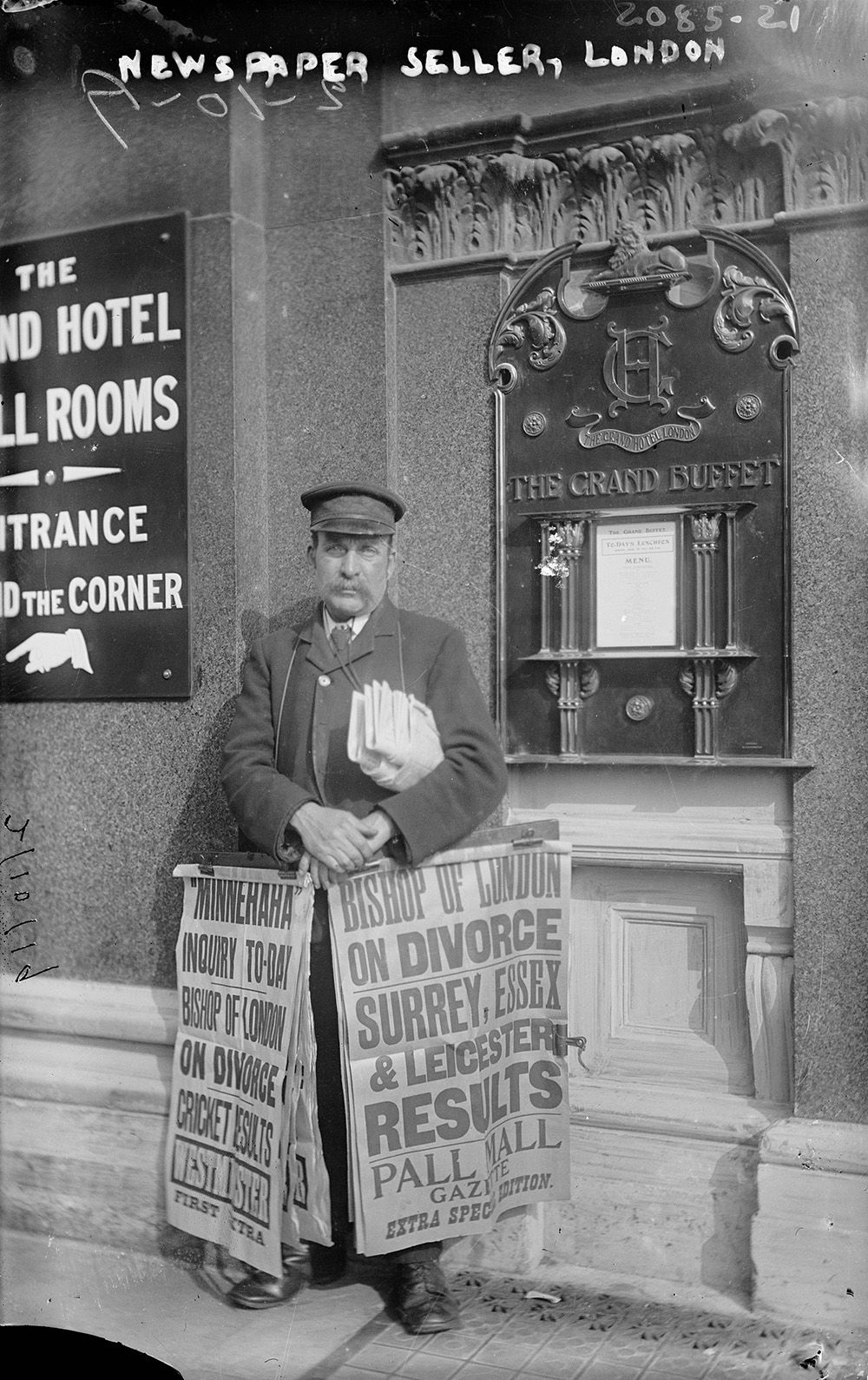What do historians lose with the decline of local news? - 8 minutes read

‘By the 1990s many titles were “local in name only”’
Rachel Matthews, Associate Director of the Institute for Creative Cultures at Coventry University and author of The History of the Provincial Press in England (Bloomsbury, 2017)
While we might take issue with the idea that there is less local news, it is undeniable that there is a decline in the legacy local newspaper with which we associate its delivery. This decline is in the numbers of titles and also, significantly, in their visibility. The move to digital has put papers online and also removed the surrounding trappings, such as town centre offices or newspaper sellers, from our streets. Financial pressures mean fewer staff, who are reliant on remote methods of communication rather than being visible in communities.
This loss of the physical newspaper is significant to the historian because the local newspaper’s physical legacy is that most often accessed by both professional and amateur historians. I would suggest, though, that we need a more nuanced understanding of where we are in the decline of the local newspaper. For instance, the peak number of local titles was in 1914, while newspaper wars meant circulations reached their peak in the mid-1970s. In the 19th century, titles were dominated by reports of national affairs or lengthy verbatim reports of Parliament; hardly the stuff of local record. Evidence suggests that local, targeted content only became the dominant feature of local newspapers in the early 20th century to support the sale of advertising. By the 1990s, the continued consolidation of the local newspaper industry meant that, while there were still numerous titles, many were being condemned as, in the words of Bob Franklin, ‘local in name only’. This lack of local content recalls the origins of the provincial press in the 18th century when publishers relied on ‘cut and paste’ content lifted from other newspapers rather than producing content about their own circulation areas.
A lack of engagement with the workings of the local newspaper industry means this historical source is often poorly understood. Ironically the current decline may offer an opportunity to redress this balance. At present there are just a few scattered archives in the UK where particular editors or owners have had the presence of mind to preserve records, such as that relating to Norfolk newspapers in Norwich. A strategic approach to preserving this sort of data might actually turn the current decline into an opportunity for the historian.
‘Any insight into the inner workings of local democracy is lost’
Carole O'Reilly, Senior Lecturer in Media & Cultural Studies at the University of Salford
Local news was the communicative node of British towns and cities until the late 20th century. Local and provincial newspapers flourished, and most urban centres offered a choice among several publications. The disappearance of many of those titles has been one of the most obvious changes in urban life in the past century. Some 112 local newspapers have closed in the past decade alone. Historians have relied on the local press for valuable snapshots of everyday life. Column after column of births, marriages and deaths chronicled the ebb and flow of human existence, enabling the tracing of ancestors, celebrities and locally influential people. Dense pages of classified advertising shed light on new products and local businesses, allowing historians to track and monitor the evolution of consumer demands.
In this period, the provincial press was dominated by forensically detailed accounts of local council meetings. These provided an important tool for any historian hoping to understand local decision-making and democratic processes – and to assess levels of local accountability. Contemporary accounts of local councils only report final decisions and not the debates themselves. Any insight into the inner workings of local democracy is lost. Digitisation of the local press has been sporadic and tends to emphasise larger titles and ignore the marginal and ephemeral local satirical press, for instance. We have not only lost locally written content but much that is illustrative too – cartoons and caricatures that capture and lampoon local politicians.
However, does this mean that there is less local news available for the historian? Clearly not, and some independent, reader-funded local organisations have appeared to redress the balance. But these only exist in online formats and archival strategies vary, so their accessibility to future historians is questionable. The loss of the printed local newspaper has robbed historians of many crucial opportunities to learn about their communities, the mechanisms of democracy and the changing character of any given locality.

‘The majority of the local press no longer functions as a resource of record’
Martin Conboy, Emeritus Professor of Journalism History at the University of Sheffield and co-editor of The Routledge Companion to British Media History (Routledge, 2018)
For more than two centuries, the parochialism of the London press when it came to national news was notorious, despite the blossoming of hundreds of local newspapers in the UK that could have served as source material. In similar fashion, historians’ deployment of the press in general, especially the local press, was abject since questions of access and reliability meant that beyond checking on specific events and passing antiquarian interest, serious historians looked for other more coherent collections of material.
This continued until the early 21st century with the explosion of online collections digitised by JISC, Gale Cengage Learning, ProQuest and others. Digitised local newspapers have therefore moved from the ephemeral to the archival. The benefits this access brings to researching the history of the regions of the UK are enormous and reflect the fine-grained attention that local newspapers provide as alternatives to the London-centric focus of the nationals.
This boom in digital availability of the local press of the past occurs at a point, however, when the decline of those very newspapers has become entrenched. This trend was evident before the digital era and its draining of income from sales and advertising, as local titles saw a reduction from 1,687 in 1985 to 1,284 ten years later. That trend has continued with 320 titles closing between 2010 and 2020. Those that remain are pared down and unable to afford the traditional all-round civic scope, particularly in the oversight of courts, local councils and school boards. The majority of the local press therefore no longer functions as a resource of record.
Hyperlocal productions, blogs and civic reportage can cover some of the scope of the traditional local newspaper, but for historians to come it will be the lack of systematic records that will create an informational vacuum. They will be forced to look elsewhere for the rich accounts of life outside the southeast of the UK that local newspapers once provided.
‘As long as humans have talked, the exchange of news, usually parochial, has been at the centre of personal interaction’
Andrew Pettegree, Wardlaw Professor of Modern History at the University of St Andrews and author of The Book at War (Profile, October 2023)
Historically, all news was local: indignation that the farmer’s cows had trampled the commons; the tragedy of a dead child; what the apprentice boy had been up to (again); whether to cut the hay or risk the rain holding off for a couple of days. As long as humans have talked, the exchange of news, usually parochial, has been at the centre of personal interaction. News of faraway events was consequential only to the ruling elite and international merchants, and they laid out considerable sums of money to get it.
Is it so very different now? We still care most about what will most impact our daily lives, what we can find in the shops, whether the trains will run, what we will see in the cinema, and the weather (always the weather). So what we are talking about is not the death of local news, but the collapse of a particular substrata of the media: paid journalistic content in local newspapers. Those newspapers struggle on, relying on agency copy or reader submissions (even 20 years ago, the arch and ironical reports of our staff cricket team penned by a lecturer in the Philosophy Department were published without adjustment in the local paper). However, these shifts in the news landscape are not a crisis of civilisation, but part of a continuous cycle of adjustment as new media come online.
Local radio has come to play a far larger part in people’s lives than 30 years ago. The history of communication is one of constant change, as new technologies disrupt the current ecology, but nothing needs to die for new media to find a place: the history of communication is cumulative rather than consecutive. While each new invention is greeted with huge expectations and doom-laden prophecy, consumers pragmatically gobble up anything they fancy from this technological buffet; they assimilate change with surprising ease. Historians will just have to keep up.
Source: History Today Feed